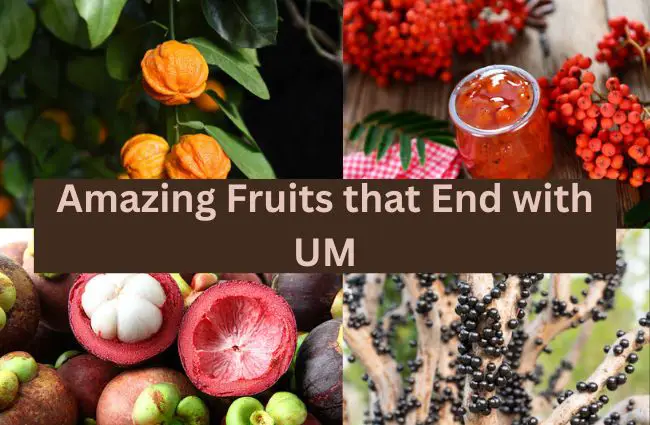Helpful Guides on each Category
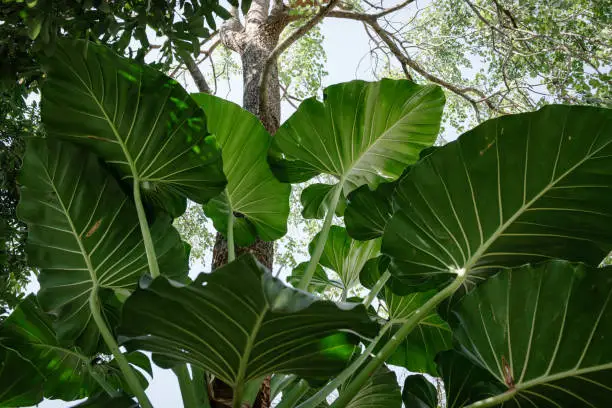
Philodendron rugosum, whose nickname is the wrinkled-leaf philodendron, is a tropical plant that requires special care to thrive well.
To care for Philodendron rugosum for best growth, provide Bright indirect sunlight. Allow the top inch of soil to dry out between waterings. Prefers high humidity (50% or more) so mist regularly. Maintain temperatures of between 65-80°F (18-27°C). A well-draining potting mix of potting soil, perlite, and orchid bark is best for growth.
Fertilize monthly during the growing season (spring and summer) with a balanced fertilizer diluted to half strength.
Scientific name: Philodendron Rugosum
Common name: Pigskin Philo, Philodendron Rugosum, wrinkled-leaf philodendron, Sow’s Ear Plant.
Philodendron rugosum Quick Plant Care summary
| Common Name: | Philodendron Rugosum, Pigskin Philodendron, Sow’s Ear Plant |
| Scientific Name: | Philodendron rugosum |
| Family: | Araceae |
| Origin: | Tropical South America |
| Growth Rate: | Moderate |
| Identification: | Distinctive, textured leaves with wrinkled, rippled surfaces. Looks like pigskin or a sow’s ear. |
| Height: | Up to 10 feet tall |
| Soil: | Well-draining potting mix. |
| Humidity: | High (50% or more). |
| Temperature: | 65-80°F (18-27°C). Avoid cold drafts. |
| Sunlight: | Bright indirect sunlight. |
| Toxicity: | Toxic to Humans, cats and dogs if ingested. |
| Pests: | Mealybugs, spider mites, and scale. |
| Diseases: | Root rot. |
Philodendron Rugosum History and why it is rare?
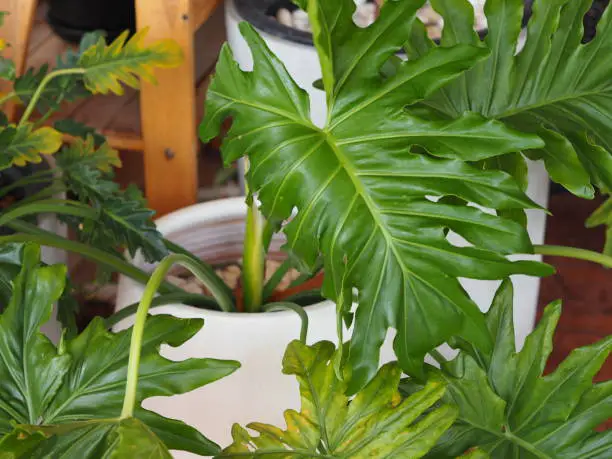
Philodendron rugosum, also known as the wrinkled-leaf philodendron, is a rare and sought-after plant among plant enthusiasts. Its scarcity can be attributed to several factors:
1. Natural Habitat:
This Philodendron is native to the tropical rainforests of South America, particularly in regions such as Ecuador, Colombia, and Peru. It grows in the understory of the dense forest, which makes it challenging to access and collect in the wild.
2. Limited Distribution:
The natural range of Philodendron rugosum is relatively restricted. It is found in specific regions within its native countries, further limiting its availability in the wild.
3. Slow Growth:
Philodendron rugosum is a slow-growing plant, which means it takes a longer time to reach a mature size. Slower growth rates make it more challenging to propagate and produce large quantities for commercial distribution.
4. Difficulty in Cultivation:
While Sow ear can be cultivated, it requires specific care conditions to thrive. The plant’s high humidity and temperature requirements, along with its sensitivity to cold drafts, pose challenges for growers. As a result, it may be more difficult to mass-produce compared to other more common philodendron varieties.
5. High Demand:
Philodendron rugosum has gained popularity among plant collectors and enthusiasts due to its unique and aesthetically appealing features. The combination of limited availability and high demand contributes to its scarcity in the market.
Philodendron Rugosum Physical description and Identification
The defining characteristic of Philodendron Rugosum is its striking, textured foliage. Imagine a palette of deep, velvety greens adorned with intricate wrinkles and ripples, evoking comparisons to pigskin or a sow’s ear. These large, heart-shaped leaves can reach up to 12 inches (30 cm) in length and boast a matte finish, adding to their unique appeal.
This Philodendron exhibits a climbing vine nature, readily trailing upwards if provided with support. In ideal conditions, it can reach impressive heights of 4 feet (1.2 meters) or even climb much higher.
Due to its climbing habit, this Philodendron doesn’t form a compact shape. It sprawls outwards, displaying its cascading foliage in all its textured glory.
Philodendron Rugosum Care
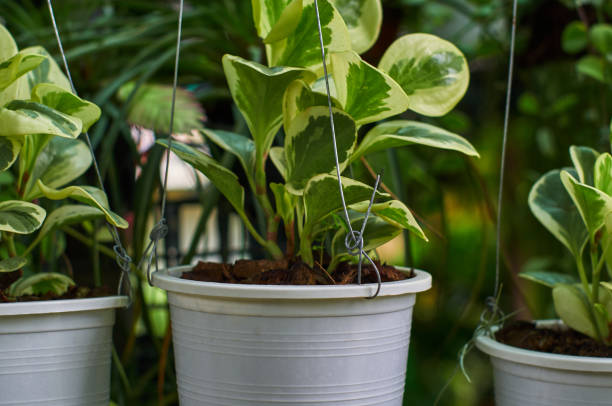
Philodendron rugosum requires specific care to thrive. Here are some guidelines for its care:
Soil
Use a well-draining, peat-based potting mix for Philodendron rugosum. Avoid soil that retains too much moisture. The soil should retain some moisture while allowing excess water to drain away. A mix that includes perlite or vermiculite can help improve drainage.
A good option is a mixture of:
- Potting soil (50%)
- Perlite (25%) for drainage
- Orchid bark (25%) for aeration
Light
Philodendron rugosum prefers bright, indirect light. Place it in a location with filtered or dappled sunlight. Avoid exposing it to direct sunlight, as it can scorch the leaves. If the plant is not receiving enough light, its growth may become leggy and the leaf size will reduce.
Watering
Keep the soil slightly moist, but avoid overwatering. Water the plant when the top inch of the soil feels dry. Ensure good drainage to prevent the roots from sitting in water, which can lead to root rot. It’s better to underwater slightly than to overwater this plant.
Temperature
Philodendron rugosum thrives in warm temperatures between 65°F and 85°F (18°C to 29°C). It is sensitive to cold drafts, so keep it away from chilly windows or doors. Avoid exposing it to temperatures below 55°F (13°C) as it will damage the plant.
Humidity
This plant enjoys high humidity levels. Mist the leaves regularly or place a humidifier nearby to increase humidity. Alternatively, you can create a pebble tray by placing a shallow tray filled with water and pebbles near the plant. This helps to maintain a humid microclimate around the plant. Low humidity will cause dry, crispy leaves.
Fertilizer
Fertilize monthly during the growing season (spring and summer) with a balanced liquid fertilizer diluted to half strength.
Feed Philodendron rugosum with a balanced, water-soluble fertilizer during the growing season (spring and summer). Follow the instructions on the fertilizer package for the correct dosage and frequency. Avoid over-fertilizing, as it can cause fertilizer burn or lead to salt buildup in the soil.
Philodendron Rugosum Maintenance & Pruning
- Regularly remove dead, damaged, or yellowing leaves to promote healthy growth.
- Wipe down the leaves with a damp cloth to remove dust and pests.
- Pruning encourages bushier growth and can control the size and shape of the plant.
- Prune just above a node using sharp, sterilized shears.
Potting/Repotting
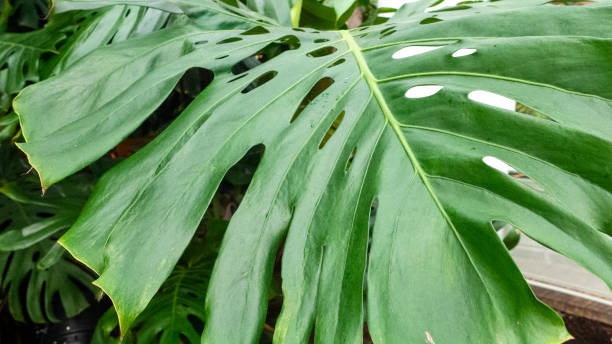
Here’s how to pot or repot your Philodendron rugosum:
- Select a suitable pot: Choose a pot with drainage holes that is slightly larger than the current pot size. This allows room for the plant to grow and prevents waterlogging.
- Prepare the potting mix: Use a well-draining potting mix specifically formulated for tropical plants or create a mix by combining peat moss, perlite, and a bit of compost or organic matter. This mix provides good aeration and moisture retention.
- Repotting process: Gently remove the Philodendron rugosum from its current pot, being careful not to damage the roots. Place a layer of fresh potting mix at the bottom of the new pot. Position the plant in the center and fill the sides with additional potting mix, ensuring the roots are covered and supported. Press the soil lightly to secure the plant.
- Watering after repotting: After repotting, give the plant a thorough watering to settle the soil and help the roots establish. Allow excess water to drain out from the bottom of the pot.
Propagating Philodendron Rugosum
Method 1: Stem Cuttings
Materials:
- Healthy Philodendron Rugosum plant
- Sharp, sterilized knife or shears
- Potting mix with good drainage
- Pot with drainage holes
- Clear plastic bag (optional)
Steps:
- Choose a healthy, mature stem with at least 2-3 nodes (leaf points). It should be 4-6 inches long.
- Cut just below a node at an angle. Make sure at least one node is below the cut and 1-2 leaves remain above.
- Remove any bottom leaves, leaving only the top 1-2. This allows the plant to focus its energy on root growth.
- Allow the cut end to dry and harden for 1-2 days. This prevents infection and promotes root growth.
- Fill a pot with well-draining potting mix. Make a hole and insert the stem, ensuring the node is buried. Gently firm the soil around the base.
- Water the soil thoroughly and place the pot in a warm, brightly lit location with indirect sunlight. Maintain high humidity by misting regularly or using a plastic bag (with ventilation holes) over the pot.
- Be patient! Root development can take several weeks. Monitor the soil moisture and mist regularly.Once you see new leaves emerge, gradually remove the plastic bag and acclimate the plant to lower humidity.
Method 2: Air Layering
Materials:
- Sphagnum moss
- Plastic wrap
- String or tape
- Knife or shears (optional)
Steps:
- Select a healthy aerial root on a mature stem. If no aerial roots are present, you can create one by making a small, diagonal cut on the stem below a node, wrapping it with moist sphagnum moss, and covering it with plastic wrap secured with string or tape.
- Just below the aerial root or your sphagnum moss pack, make a 1-2 inch circular cut through the stem, removing a ring of bark.
- Pack the wound with moist sphagnum moss.
- Cover the sphagnum moss with plastic wrap and secure it tightly above and below the wound.
- Keep the sphagnum moss moist and be patient. Once new roots emerge through the sphagnum moss, cut the stem below the newly developed roots and remove the plastic wrap. Pot the new plant in well-draining potting mix and care for it like a mature Philodendron Rugosum.
Is Philodendron Rugosum toxic to Humans, cats and dogs?

Philodendron rugosum is toxic to human, cats and dogs. Like many other plants in the Philodendron genus, contains calcium oxalate crystals.
These crystals can cause irritation and discomfort if ingested or if the plant sap comes into contact with the skin or mucous membranes.
Philodendron Rugosum Diseases
Root Rot
- Cause: Overwatering, poor drainage, or contaminated soil.
- Symptoms: Wilting leaves, yellowing foliage, stunted growth, mushy roots, unpleasant odor from the soil.
- Treatment: Immediately remove the plant from its pot and inspect the roots. Remove any brown or mushy roots and repot in fresh, well-draining soil. Adjust your watering habits to avoid overwatering.
Bacterial Leaf Spot
- Cause: Excess moisture on the leaves, poor air circulation.
- Symptoms: Small, reddish-brown spots with yellow halos on the leaves, which enlarge and turn brown or black.
- Treatment: Isolate the infected plant and remove affected leaves. Improve air circulation and avoid wetting the leaves when watering. In severe cases, fungicides may be necessary.
Philodendron Rugosum Pests
Mealybugs
Small, white, cottony insects that suck the sap from leaves and stems.
- Damage: Yellowing leaves, sticky honeydew secretions, sooty mold growth.
- Treatment: Remove mealybugs with cotton swabs dipped in alcohol or insecticidal soap solution. For larger infestations, use neem oil or systemic insecticides.
Spider Mites:
Tiny, red or yellow mites that spin delicate webs on the undersides of leaves.
- Damage: Pale stippling on leaves, leaves turning yellow and dropping.
- Treatment: Increase humidity, blast the plant with water, or use insecticidal soap or neem oil sprays
why is my Philodendron Rugosum turning brown; how do I fix this?
- Underwatering: Philodendron Rugosum prefers evenly moist soil, but not soggy. If the soil is dry to the touch for too long, the leaves will start to brown and curl.
- Overwatering: While underwatering is a common culprit, overwatering can also cause browning leaves. Excess water can lead to root rot, which damages the plant’s ability to absorb nutrients and water. The leaves will start to brown and fall off.
- Light burn: Philodendron Rugosum prefers bright, indirect light. Too much direct sunlight can scorch the leaves, causing brown patches.
- Low humidity: Philodendron Rugosum thrives in moderate to high humidity (around 50% or more). Dry air can cause the leaves to brown and become crispy at the edges.
- Nutrient deficiency: A lack of nutrients, especially nitrogen or potassium, can cause the leaves to turn brown and fall off.
Why is My Philodendron Rugosum leaf turning yellow; how do I fix this?
- Overwatering: Similar to browning leaves, overwatering is a major cause of yellowing leaves. The roots become damaged and unable to absorb nutrients, leading to yellowing and leaf drop.
- Nutrient deficiency: A lack of nutrients, particularly nitrogen or magnesium, can cause the leaves to turn yellow, especially older leaves at the bottom of the plant.
- Lack of light: While Philodendron Rugosum prefers indirect light, too little light can also cause the leaves to turn yellow and drop.
- Aging: It’s natural for older leaves to yellow and fall off as new growth emerges. However, if a large number of leaves are yellowing, it could be a sign of another problem.
FAQs
Yes, Philodendron rugosum is considered a relatively rare plant in cultivation. It may not be as commonly available as some other Philodendron species. Its unique leaf texture and dark green color make it highly sought after by collectors and enthusiasts.
Yes, Philodendron rugosum can be grown as an indoor plant. It adapts well to indoor conditions and thrives in bright, indirect light. It is important to provide it with suitable humidity levels and well-draining soil. Indoor cultivation allows for easier control of environmental factors and protection from harsh weather conditions.
Philodendron Rugosum exhibits a climbing vine nature. In ideal conditions, it can reach impressive heights of 4 feet (1.2 meters) or even climb much higher with support. With proper training and guidance, it can be encouraged to adopt a more upright or vining appearance.

